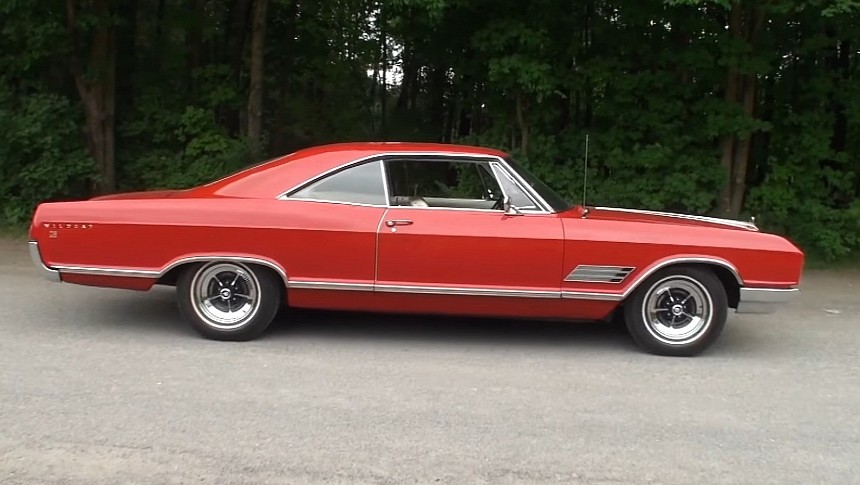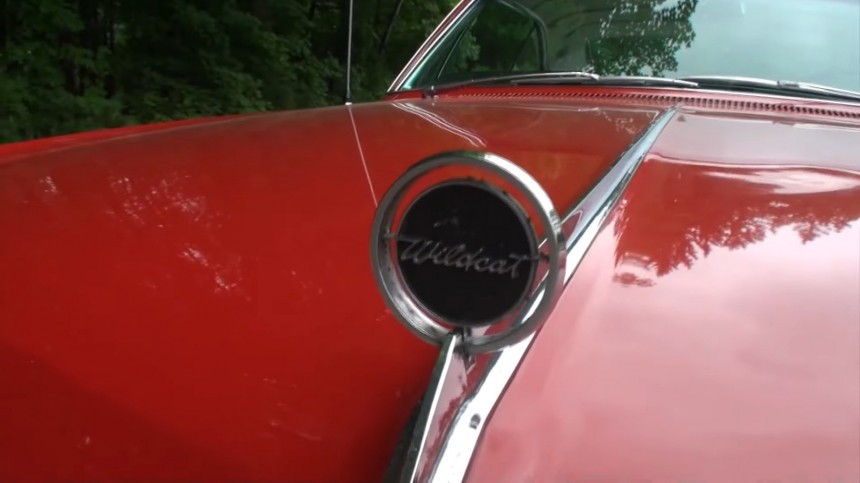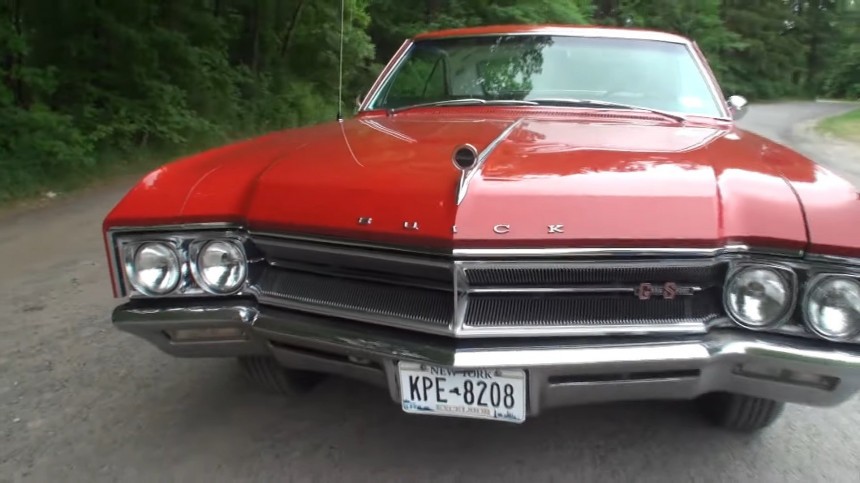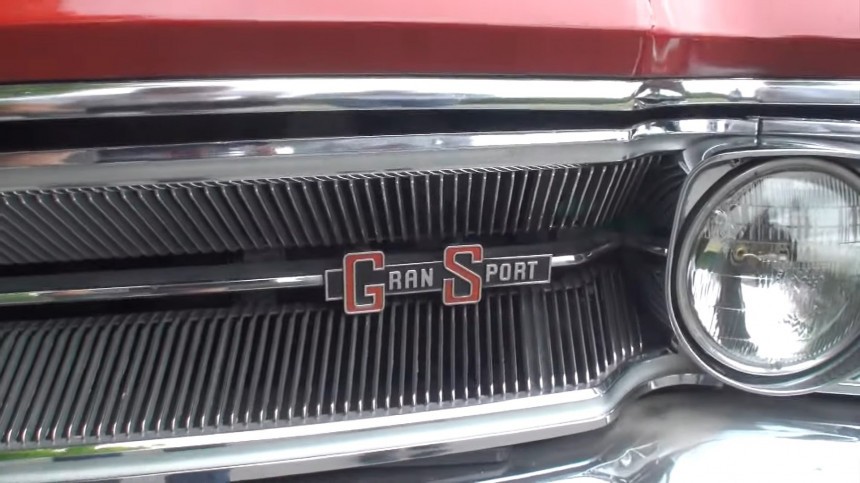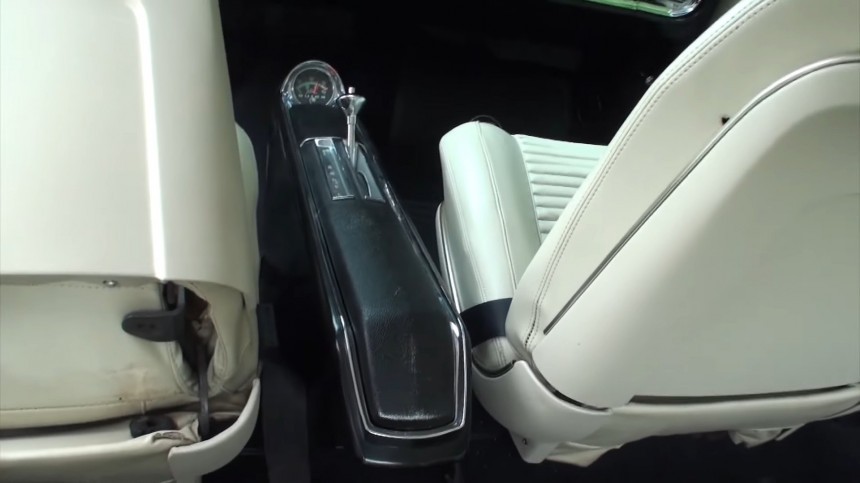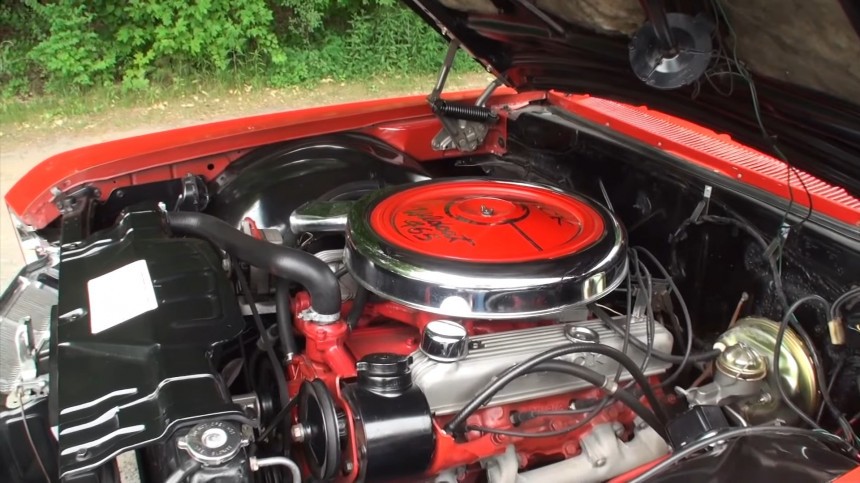After the emergence of the first Corvette in 1953, General Motors flirted with the idea of small, non-metallic-bodied sportscars in the following years. Particularly, Buick designers were tasked to conceive variations of the sexy theme, and their ideations caught the shape of a wildcat.
Well, not the literal shape of a non-domesticated feline, but an eponymous nameplate. Sadly, the car never made it past the concept stage – albeit it did see three different versions. Fortunately, the moniker was deemed worthy of adorning a later model from Buick.
Like other makes, and models from General Motors, the Wildcat caught series production form as a sub-series of the Invicta line in 1962. The formula was pretty straightforward: short-wheelbase frame, big engine. In fact, it was Buick’s biggest engine, the 401-cubic-inch (6.6-liter), 325 gross horsepower V8 (330 PS).
The Wildcat package had an easily distinguishable interior, with bucket seats a la Ford Thunderbird separated by a center console that boasted a sparkling but impractical tachometer. The first Wildcat didn’t spur a lot of showroom traffic, with around 2,000 units sold for the model year.
Buick then made the decision to scrap the Invicta Wildcat offer and instead roll out a stand-alone Wildcat model. Introduced in 1963, the badge eventually superseded the Invicta and lent its name to Buick’s big V8s.
The same year saw the coming of one of Buick’s superstars – the Riviera – which received a bigger motor. The 401 CID got bored out to 425 cubes (7.0 liters) and offered 340 hp (345 PS) and 465 lb-ft (628 Nm) of torque. That engine received the moniker `Wildcat 465` after the enormous crank-spinning force rating. Naturally, the V8 was offered on the Wildcat automobile, also.
Buick was on the verge of a sales comeback, but it faced sharp internal competition from Pontiac, and the Wildcat wildcard was played in various forms to find the money-making sweet spot. The model offered a three-car lineup – a two-door convertible, a two-door hardtop, and a four-door hardtop.
In ’64, the sedan joined the bunch, and sales more than doubled (more than 84,000 Wildcats hit the streets that year, compared to nearly 36,000 in its first full-standing model year). Incidentally, 1964 would be the best-selling year for the Wildcat, but the car still hadn’t found its definitive expression.
In 1965, the automobile – now at its second generation – moved halfway between the lower-cost LeSabre and the high and mighty Electra 225, sharing its 126-inch (3,200 mm) wheelbase. It kept the elongated lines of the LeSabre, the tri-shield logo in a chromed ring, and big vent-like strakes on the front fenders (a hint at the famous VentiPorts from the late forties).
The Wildcat caught up to speed with the muscle car movement in 1966, when an optional high-performance package was available: the somewhat obscure, one-year-only $255 Gran Sport option. Available for the two-door hardtop and convertible, this High Performance Group consisted of a high-tuned engine, dual exhausts, heavy-duty suspension, a 3.42:1 PosiTraction rear end, and whitewall or redline 8.45×15 tires.
Gran Sport badges were strategically placed on the outside, and the interior – and the example featured in the video is one of those special and rare 1966 Buick Wildcat Gran Sports. Rare, because only 1,244 were made; special because it is unrestored, original, and in fantastic shape.
The Gran Sport upgrade brought the 340-hp, 465 lb-ft V8 and a choice of four-speed manual or three-speed Turbo-Hydramatic 400 gearboxes. Our hero (caught on tape by Lou Costabile, the classic car vlogger) features this combo and is one of the 1,002 hardtops bearing the Gran Sport emblem.
Although Buick was GM’s second-highest-ranking division on the luxury hierarchy, the Wildcat is – as we can see – almost spartan on the inside. The bare minimum is offered, making use of as few buttons as mechanically necessary. The oddly-placed tachometer still crowns the center console that houses the three-speed shift lever.
A discrete `Wildcat GS` script on the dash, in front of the passenger seat, reminds occupants of what this Buick is all about. Tested in February 1966, one Wildcat Gran Sport scored a 7.4-second time in the 0-60 mph (97 kph) sprint and snatched a 125-mph top speed (201 kph). Mechanix Illustrated praised it as “the most comfortable and best Buick ever.”
The original V8 runs limousine-style smooth – listen to it – braving its 85,000+ miles on the odometer (137,000 km) and the last 57 years. Naturally, there are minor blemishes here and there, but this car definitely had a great life, and its owners knew what they were driving. The current owner himself openly admits he has never seen one at car shows in his over four decades of constant participation.
It would be fair to note that there was a higher-performance variant of the Gran Sport. A dealer-installed dual quad option could be ordered instead of the standard single four-barrel carburetor found on the big V8.
This twin four-barrel architecture – most commonly associated with the rivals from Highland Park and their 426 HEMI that also hit the streets in ’66 with the first-gen Dodge Charger – was more impressive on paper than in metal.
Shipped in the cars’ trunks and installed by the dealers, the two carbs did not convince the public – or the media – of their superiority. Although it offered 360 hp (365 PS), the high-power option was largely regarded as “excessive” and mostly unusable, with the power surplus becoming available at very high speeds.
Like other makes, and models from General Motors, the Wildcat caught series production form as a sub-series of the Invicta line in 1962. The formula was pretty straightforward: short-wheelbase frame, big engine. In fact, it was Buick’s biggest engine, the 401-cubic-inch (6.6-liter), 325 gross horsepower V8 (330 PS).
The Wildcat package had an easily distinguishable interior, with bucket seats a la Ford Thunderbird separated by a center console that boasted a sparkling but impractical tachometer. The first Wildcat didn’t spur a lot of showroom traffic, with around 2,000 units sold for the model year.
The same year saw the coming of one of Buick’s superstars – the Riviera – which received a bigger motor. The 401 CID got bored out to 425 cubes (7.0 liters) and offered 340 hp (345 PS) and 465 lb-ft (628 Nm) of torque. That engine received the moniker `Wildcat 465` after the enormous crank-spinning force rating. Naturally, the V8 was offered on the Wildcat automobile, also.
Buick was on the verge of a sales comeback, but it faced sharp internal competition from Pontiac, and the Wildcat wildcard was played in various forms to find the money-making sweet spot. The model offered a three-car lineup – a two-door convertible, a two-door hardtop, and a four-door hardtop.
In 1965, the automobile – now at its second generation – moved halfway between the lower-cost LeSabre and the high and mighty Electra 225, sharing its 126-inch (3,200 mm) wheelbase. It kept the elongated lines of the LeSabre, the tri-shield logo in a chromed ring, and big vent-like strakes on the front fenders (a hint at the famous VentiPorts from the late forties).
The Wildcat caught up to speed with the muscle car movement in 1966, when an optional high-performance package was available: the somewhat obscure, one-year-only $255 Gran Sport option. Available for the two-door hardtop and convertible, this High Performance Group consisted of a high-tuned engine, dual exhausts, heavy-duty suspension, a 3.42:1 PosiTraction rear end, and whitewall or redline 8.45×15 tires.
The Gran Sport upgrade brought the 340-hp, 465 lb-ft V8 and a choice of four-speed manual or three-speed Turbo-Hydramatic 400 gearboxes. Our hero (caught on tape by Lou Costabile, the classic car vlogger) features this combo and is one of the 1,002 hardtops bearing the Gran Sport emblem.
Although Buick was GM’s second-highest-ranking division on the luxury hierarchy, the Wildcat is – as we can see – almost spartan on the inside. The bare minimum is offered, making use of as few buttons as mechanically necessary. The oddly-placed tachometer still crowns the center console that houses the three-speed shift lever.
The original V8 runs limousine-style smooth – listen to it – braving its 85,000+ miles on the odometer (137,000 km) and the last 57 years. Naturally, there are minor blemishes here and there, but this car definitely had a great life, and its owners knew what they were driving. The current owner himself openly admits he has never seen one at car shows in his over four decades of constant participation.
It would be fair to note that there was a higher-performance variant of the Gran Sport. A dealer-installed dual quad option could be ordered instead of the standard single four-barrel carburetor found on the big V8.
Shipped in the cars’ trunks and installed by the dealers, the two carbs did not convince the public – or the media – of their superiority. Although it offered 360 hp (365 PS), the high-power option was largely regarded as “excessive” and mostly unusable, with the power surplus becoming available at very high speeds.
